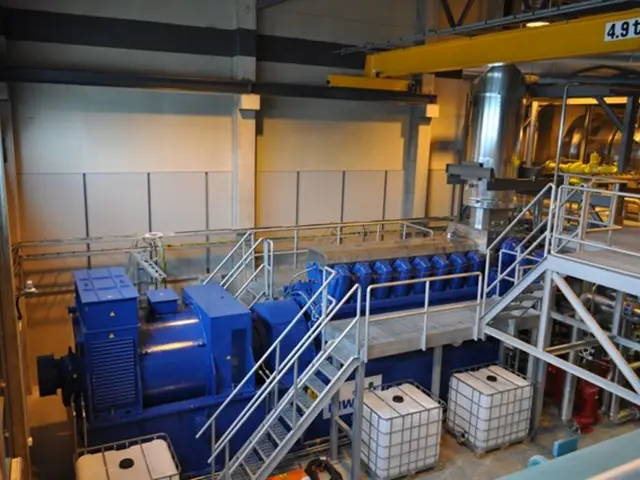Tracking Economic Transformations in Energy-Based Economies: Building Predictive Models for Quantifying economic shifts in energy-dependent economies
In a groundbreaking study, researchers have developed an economic impact analysis model aimed at understanding the effects of energy development on rural American communities. The project, named "Maximizing the Gains of Old and New Energy Development for America's Rural Communities," employs a geographically explicit framework and spatial modeling to provide a comprehensive analysis of the localized economic impacts of energy development and shocks.
The model takes into account a variety of factors, including community size and geography, time frame, energy resource potential, economic sector, historical intensity of energy infrastructure, and demographic and educational attainment variables.
Community Size & Geography
The model differentiates areas based on population density and spatial location, recognizing that decentralized renewable energy options are more cost-effective in sparsely populated or remote rural communities, whereas centralized grid supply suits denser areas better.
Time Frame
The model incorporates cost reduction projections and changes over a 20-year horizon, allowing it to simulate the economic impacts of energy development and transitions over a long-term period.
Energy Resource Potential
By integrating renewable energy resource data (such as hydroelectric, biomass, wind, solar) spatially, the model can predict which energy type is feasible and economically viable in each region.
Economic Sector
The model assesses the impact of energy shocks on GDP and employment, disaggregated by sector, capturing how different sectors respond to changes in energy development and supply.
Historical Intensity of Energy Infrastructure
The presence or absence of existing energy infrastructure is factored in to understand how previous investments and development intensity condition the community’s ability to absorb new energy projects and the resultant economic effects.
Demographic and Educational Attainment Variables
These serve as socio-economic controls to estimate how workforce skills and population composition influence the local economic benefits, employment outcomes, and adaptability to energy transitions.
The model's findings indicate that, while the energy sector has contributed to job growth in non-metro counties, it has also led to declines in other sectors, such as manufacturing and agriculture. In metropolitan areas, the effects of energy sector expansion are less pronounced, with employment in sectors like transportation and warehousing experiencing growth after one year.
However, the research team's model suggests that there is no single factor that can best predict the economic impact of an energy shock. Instead, the model considers a range of variables, including metro vs. non-metro, time difference, instrumental variable approach, industry mix, and mining.
Overall, the model combines spatial cost-effectiveness modeling with economic sector and demographic controls to predict localized economic impacts of energy development and shocks in rural American communities, enabling policymakers to tailor strategies that maximize economic gains while considering community-specific conditions.
References:
[1] Maximizing the Gains of Old and New Energy Development for America's Rural Communities. (n.d.). Retrieved from https://www.energy.gov/eere/wind/pdfs/maximizing-gains-old-and-new-energy-development-americas-rural-communities-final-report
[2] Zilberman, D., & Kahn, J. (2016). Energy Development and the Rural Economy: A Review of Recent Evidence. Journal of Rural Studies, 51, 21-36.







